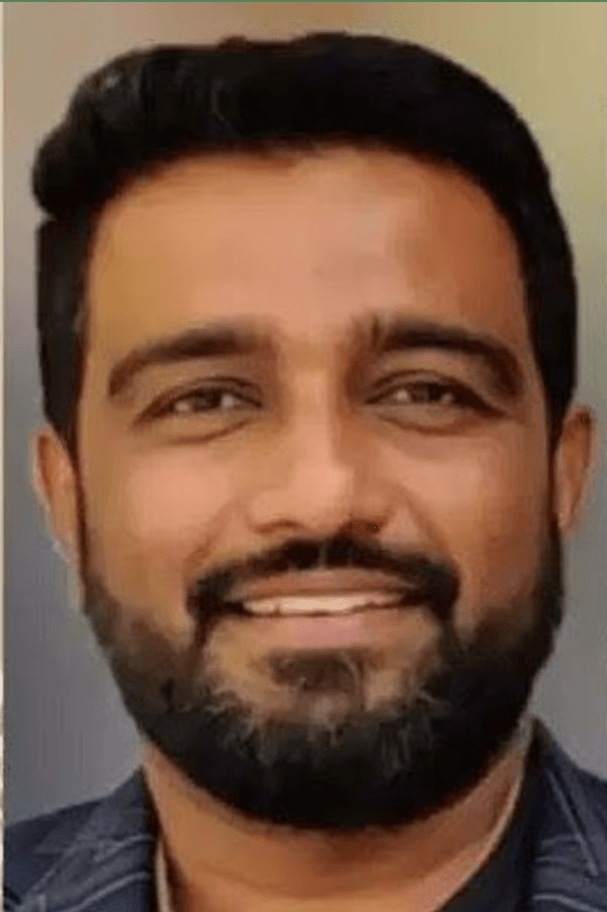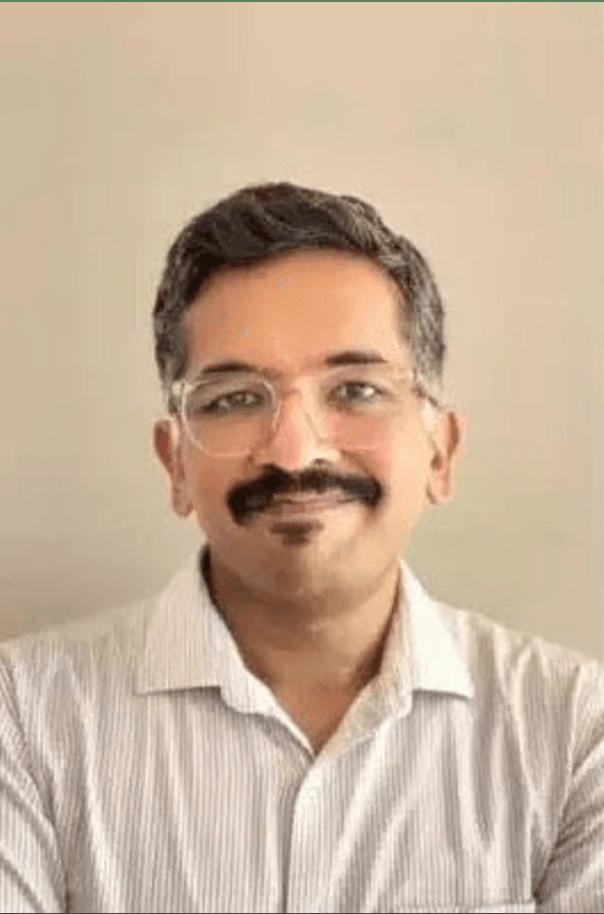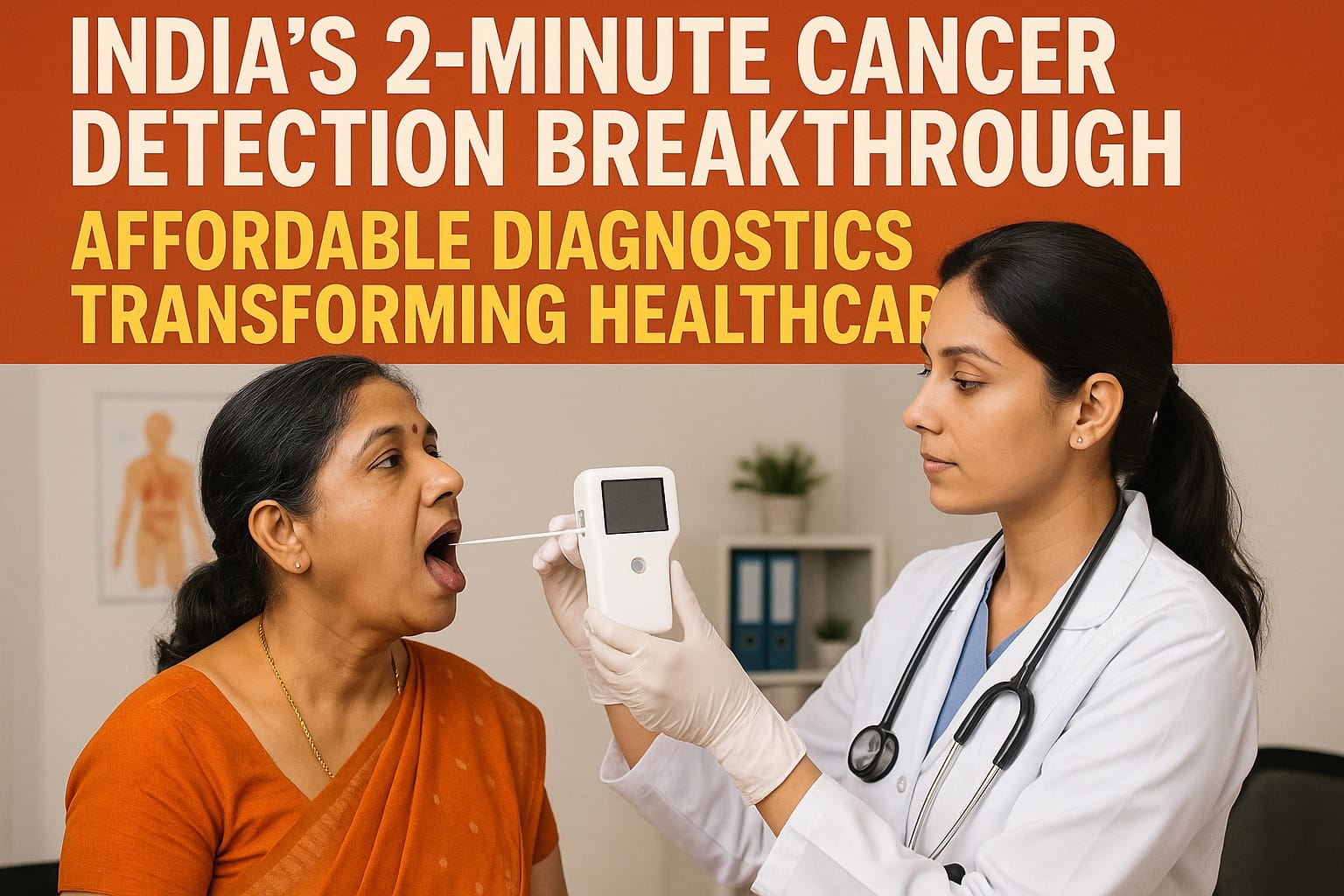2 Minute Cancer Detection – In the global battle against cancer, one of the most critical challenges is not the lack of treatment options, but the inaccessibility and cost of early diagnosis. For millions, particularly in developing nations, a cancer diagnosis often comes too late, discovered only after the disease has progressed to an advanced, and often incurable, stage.
The traditional diagnostic journey is lengthy, invasive, and prohibitively expensive, creating a formidable barrier to life-saving care. Yet, from the heart of India’s innovation hub in Bengaluru, a groundbreaking solution has emerged that promises to dismantle these barriers. A new device, capable of detecting cancer in just two minutes, is poised to become India’s 2-Minute Cancer Detection Breakthrough: Affordable Diagnostics that could truly transform healthcare on a global scale.
This detailed exploration will delve into the profound impact of this innovation, examining the science behind it, the pressing need for such a solution, and the immense potential it holds for saving countless lives. We will discuss the global burden of cancer and the challenges of traditional diagnostics, the visionary minds behind this device, its unique benefits, and the journey from a laboratory concept to a tool for mass screening. Finally, we will consider the broader implications of this Indian-led breakthrough for affordable healthcare worldwide.
1. The Global Cancer Crisis: The Urgency of Early Detection
Cancer is a leading cause of death worldwide, with millions of new cases diagnosed each year. The World Health Organization (WHO) highlights that a significant proportion of cancer deaths could be prevented with early detection and access to quality treatment. However, several factors stand in the way of achieving this goal.
1.1. The Burden of Late-Stage Diagnosis
In low- and middle-income countries, the majority of cancer cases are diagnosed at an advanced stage. This is a direct result of several systemic issues:
- Lack of Awareness: Public knowledge about cancer symptoms and the importance of screening is often limited.
- Limited Access to Facilities: Rural and remote areas often lack the hospitals, diagnostic labs, and trained specialists required for cancer screening.
- High Costs: The cost of diagnostic tests, from biopsies to advanced imaging, is often beyond the reach of the average person, creating a massive financial barrier.
1.2. Limitations of Traditional Diagnostics
The standard diagnostic procedures for cancer are often slow, invasive, and resource-intensive.
- Biopsies: Considered the gold standard for diagnosis, a biopsy involves the surgical removal of tissue for laboratory analysis. This process is invasive, can be painful, and requires a sterile environment and a trained surgeon. The waiting period for results can span weeks, causing immense anxiety for patients.
- Imaging Scans (MRI, CT, PET): While essential for visualizing tumors, these scans are expensive, require large and complex machinery, and are typically available only in major urban hospitals. They are often used to confirm a diagnosis rather than for initial, widespread screening.
- Laboratory Tests: Blood tests and other lab analyses can provide clues, but they often require specialized equipment and a centralized lab to process samples, adding to the time and cost.
These challenges create a stark reality where affordable, accessible, and rapid diagnostic tools are not just a luxury, but an absolute necessity to turn the tide against cancer. This is precisely the void that the new Indian innovation aims to fill.
2. The Visionary Minds: Two Innovators with a Mission
The groundbreaking device is the brainchild of two Bengaluru-based innovators, Dr. Narayana Subramaniam and Dr. Hardik Pandya. Their work is a powerful example of how cutting-edge technology and a deep understanding of public health needs can converge to create a truly transformative solution. Their mission was clear: to develop a diagnostic tool that bypasses the limitations of traditional methods and makes cancer screening a quick, affordable, and painless process accessible to everyone.


2.1. The Science Behind the Breakthrough
The device leverages a powerful combination of advanced technologies:
- Cutting-Edge Imaging: The core of the device is a highly sensitive imaging technology. Instead of relying on a biopsy to analyze cells, the device uses a sophisticated camera and an imaging system to capture detailed, high-resolution images of cells and tissue in real-time, directly from a patient’s body.
- AI-Based Algorithm: The magic lies in the artificial intelligence (AI) component. The images captured by the device are immediately analyzed by a powerful AI algorithm. This algorithm has been trained on a massive dataset of images of both healthy and cancerous cells. Within seconds, it can identify subtle changes in cell morphology and structure that are indicative of cancer. The AI model’s ability to differentiate between normal and abnormal cells with high accuracy is what allows for the rapid, 2-minute diagnostic result.
- Portability: The entire device is designed to be portable. This is a key feature that allows it to be used in mobile health vans, community centers, and even in rural clinics where a full-fledged diagnostic lab is a distant dream.
The initial focus of the device is on oral cancer, a common type of cancer in India, often linked to tobacco use. However, the underlying technology is highly versatile. By simply changing the imaging component and training the AI algorithm on a new dataset, the same platform can be adapted to screen for other types of cancers, such as breast and cervical cancers, which are also major health concerns in the country. This adaptability makes the device a scalable solution for a wide range of cancer-related issues.
3. The Unpacking the Benefits: Speed, Affordability, and Accessibility
The significance of this device extends far beyond its technological sophistication. Its true value lies in the practical benefits that directly address the core problems of cancer diagnostics.
3.1. The Power of Speed: A Two-Minute Diagnosis
The “two-minute” diagnosis is a game-changer.
- Eliminating Anxiety: The long waiting period for biopsy results can be a period of intense stress and anxiety for patients and their families. A rapid diagnosis provides immediate clarity, allowing doctors to move forward with a treatment plan without delay.
- Swift Intervention: For a disease as aggressive as cancer, time is of the essence. A two-minute diagnosis means that treatment can begin much sooner, significantly improving the chances of survival and recovery, especially for early-stage cancers.
- Efficiency in Screening Programs: In mass screening campaigns, the ability to get a result in minutes allows healthcare providers to screen a much larger number of people in a shorter amount of time. This is critical for public health initiatives aimed at reaching vast populations.
3.2. Affordability: A Solution for a Billion People
The financial burden of cancer diagnostics is a major barrier in many parts of the world. The new device is a powerful answer to this challenge.
- Cost-Effectiveness: The device is reported to cost only one-tenth the price of traditional scanners. This dramatic reduction in cost makes it feasible for public health systems, non-governmental organizations, and even small private clinics to acquire and deploy the technology.
- Lowering Patient Costs: A more affordable device means a lower cost per test for the patient. This can make the difference between a person getting screened or not, especially for those living in poverty.
- Sustainable Healthcare: By lowering the cost of diagnostics, the device helps create a more sustainable and equitable healthcare system, where access to care is determined by need, not by wealth.
3.3. Accessibility and Non-Invasiveness
- Portability for Rural India: The portable nature of the device is arguably its most important feature. Instead of forcing patients to travel to distant urban centers, the diagnostic tool can be brought directly to them. It can be used in mobile health camps or primary healthcare centers in villages, bringing diagnostics to the doorsteps of millions who are currently underserved.
- Painless and Non-Invasive: Unlike a biopsy, the device is non-invasive and painless. This removes the fear and discomfort associated with traditional screening methods, encouraging more people to get tested. A simple, non-invasive test is much easier to integrate into routine health check-ups.
4. The Journey from Lab to Reality: Clinical Trials and Mass Production
Developing a medical device is a complex journey that extends far beyond the initial prototype. The innovators are now focused on the crucial next steps to bring their device to the masses.
4.1. Clinical Validation: A Critical Step
Before any medical device can be widely used, it must undergo rigorous clinical trials to prove its safety, accuracy, and effectiveness. The innovators have already secured a significant $2.4 million grant from the U.S. National Institutes of Health. This funding is a testament to the device’s potential and will be instrumental in conducting the large-scale clinical trials needed to validate its performance and secure regulatory approval. These trials will compare the device’s results against traditional diagnostic methods to ensure its reliability.
4.2. Mass Production and Scalability
For the device to have a real impact, it must be produced at a scale that can meet the massive demand. The innovators are exploring avenues for mass production, which will be key to keeping the cost low. They will need to establish efficient manufacturing processes, secure supply chains for components, and build a robust distribution network.
4.3. Integration into Public Healthcare Systems
A key part of the vision is to make the device a standard tool in public health systems. The developers are already in discussions with the Indian government to integrate the device into public healthcare programs. This is a critical step, as government backing can accelerate deployment and ensure the technology reaches the most vulnerable populations. The device could be a central component of national cancer screening programs, particularly for oral, breast, and cervical cancers, which can be easily screened for on-site.
5. India’s Role in Global Health: A New Era of Affordable Innovation
India has long been a leader in providing affordable healthcare solutions to the world. The country is a global hub for generic medicines, producing high-quality, low-cost drugs that have made life-saving treatments accessible to millions. The new cancer detection device is a powerful continuation of this legacy.
5.1. A Hub of Medical Technology
India’s ecosystem of technical talent, a growing biomedical research sector, and a massive domestic market provide fertile ground for medical technology innovation. The device is not just a technological feat but also a product of this unique environment, where innovators are driven to create solutions that are not only cutting-edge but also practical and affordable.
5.2. A Model for Developing Nations
The challenges faced by India—a large, diverse population; vast rural areas; and a need for cost-effective solutions—are shared by many developing nations across the globe. The success of this device in India could serve as a powerful model for other countries facing similar healthcare hurdles. It proves that it is possible to create advanced, high-quality medical technology that is both accessible and affordable.
3.2. A Shift Towards Prevention and Early Intervention
The device represents a shift in the healthcare paradigm from late-stage treatment to proactive prevention and early intervention. By making cancer screening easy and accessible, it encourages a culture of regular check-ups and empowers individuals to take control of their health. This proactive approach can drastically reduce the number of cancer-related deaths and improve overall public health outcomes.
Conclusion: A Beacon of Hope for a Cancer-Free Future
The India’s 2-Minute Cancer Detection Breakthrough: Affordable Diagnostics is more than just a medical device; it is a symbol of hope. It stands as a testament to the power of human ingenuity to tackle even the most daunting of global challenges. By addressing the critical issues of cost, accessibility, and speed, this innovation has the potential to save millions of lives and fundamentally change the way we approach cancer care.
This breakthrough signifies a new chapter in global health, one where affordable, high-quality diagnostics are not a privilege for the few, but a right for everyone. As the device moves through clinical trials and toward mass production, the world will be watching, hoping that this small, portable scanner from Bengaluru will pave the way for a future where a cancer diagnosis is no longer a death sentence, but a manageable condition that can be effectively treated through timely intervention.
The Power of Our District PR Ecosystem
We are not just a media agency—we are building an entire district-level digital infrastructure with:
Each site provides:
- SEO blog space
- Video PR hosting
- Local business features
- Event coverage
- News updates
2 Minute Cancer Detection, 2 Minute Cancer Detection, 2 Minute Cancer Detection, 2 Minute Cancer Detection, 2 Minute Cancer Detection, 2 Minute Cancer Detection, 2 Minute Cancer Detection, 2 Minute Cancer Detection, 2 Minute Cancer Detection, 2 Minute Cancer Detection, 2 Minute Cancer Detection, 2 Minute Cancer Detection, 2 Minute Cancer Detection, 2 Minute Cancer Detection, 2 Minute Cancer Detection, 2 Minute Cancer Detection, 2 Minute Cancer Detection, 2 Minute Cancer Detection, 2 Minute Cancer Detection, 2 Minute Cancer Detection, 2 Minute Cancer Detection
- 1. The Global Cancer Crisis: The Urgency of Early Detection
- 2. The Visionary Minds: Two Innovators with a Mission
- 3. The Unpacking the Benefits: Speed, Affordability, and Accessibility
- 4. The Journey from Lab to Reality: Clinical Trials and Mass Production
- 5. India’s Role in Global Health: A New Era of Affordable Innovation
- Conclusion: A Beacon of Hope for a Cancer-Free Future
- The Power of Our District PR Ecosystem


